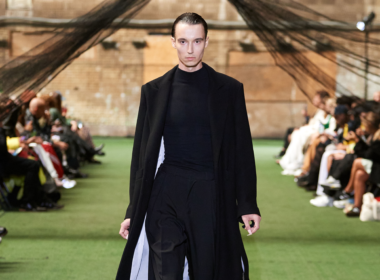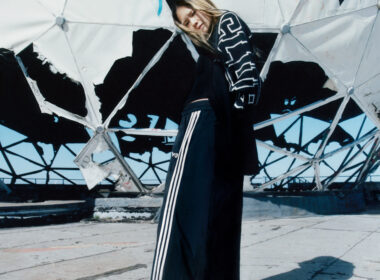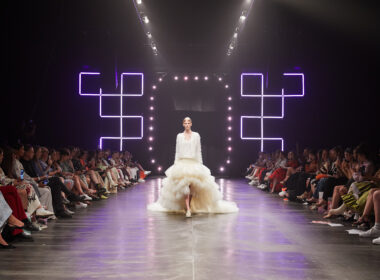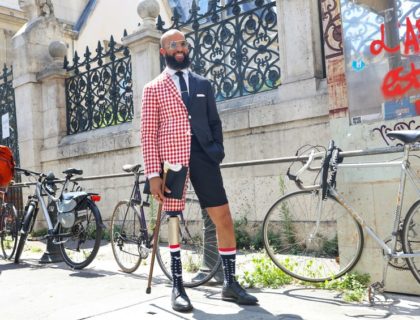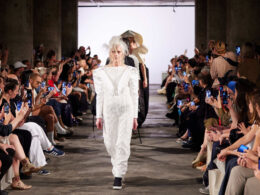Whether you think of it as the City of Dreams, the City of Music, the World’s Most livable City, or just home, Vienna offers tourists and locals alike, novel experiences enveloped in a time-honored fusion of history, architecture, and culture.
At first glance, one notices cobblestone streets and horse-drawn carriages which give the feeling of having stepped back in time. Yet, another glance skyward and you might see one of the most contemporary architectural structures you’ve ever laid eyes on. Once home to the Hapsburg dynasty, the opulence remains a part of the city’s essence, inherently casting a feeling of fortune upon those lucky enough to wander the streets or occupy space in the rooms among the architectural structures of the city.
Albertina looking toward the Opera House
Haas Haus and Stephansdom
Vienna is referred to as the City of Music because more famous composers have lived here than any other city in the world. Home to the Musikverein built in 1870, known as one of the greatest concert halls in the world for its remarkable acoustics, as well as the Staatsoper and many other historic venues, the music scene today is as relevant as it was in times past. Vienna is also referred to as the City of Dreams. Sigmund Freud developed the psychoanalysis of dreams in his psychic structure of id, ego, and super-ego. Beyond literal dreams are the dreams of the artists and architects of the city. Gustav Klimt, one of the most influential symbolist painters of the secession movement, often chose eroticism and the female form as his muse. His gold leaf technique was used in his most famous paintings. The Kiss, being one, hangs in the Belvedere. Otto Wagner, an architect, and urban planner left many landmarks throughout the city, however, the Steinhof Church stands above the rest. The chapel is considered one of the most important Art Nouveau churches in the world and it is dedicated strictly to healing. The cities influencers of long ago still play a role, as plentiful doses of history, architecture, art, and classical music generate, on average, 20 million tourists per year.
The Musikverein
Freud, Klimt and Wagner
The Kiss by Gustav Klimt
Steinhof by Otto Wagner
Last, but not least, for the tenth year running, Vienna has received the honor of being named World’s Most livable City. The quality of living distinction factors in cost of living, housing, consumer goods availability, public transportation, the political and social environment, natural environment, social-cultural environment, education, medical care, and recreation. Housing costs a fraction of what one might pay in other major cities around the world. You must not own a car, as public transportation is extremely efficient and costs a mere Euro per day for those who hold an annual pass. Vienna is full of green areas, parks with grass, gardens, and trees, and the water from the Alps provides drinkable tap water throughout the city. Medical and health care cost a nominal amount in comparison to other countries. For this reason, the food offerings throughout the grocery stores are monitored and optimized to encourage a healthy society.
Lifestyle in Vienna reflects a wholesome pace and promotes the desired outcome for every member of its society, as shown in its many programs that invest in the well-being of families and children. Imagine receiving two years for maternity leave and starting a job with four weeks of vacation! Dismaying is that the typical ways of life here are taken for granted, for the most part.
Among the nearly 2.6 million people who populate the city, only 61% are Austrian. Vienna’s international community is a vast melting pot of friendships to discover.
Burggarten
Museums Quartier
The Onyx Bar overlooking Stephansdom
Art and culture are a long-standing tradition in Vienna. Performances of live music, theater and opera can be found in abundance at various venues throughout the city every single day of the year. The Musikverein is one of the most well-known concert halls in the world, as the Vienna Philharmonic’s New Year’s Day concert is broadcast globally from the Golden Hall. Taking place among the various palaces and performance venues, the Viennese Balls offer over 2000 hours of dancing among over 450 balls available each ball season. The Opera Ball at the Staatsoper is the most legendary of these events.
Musikverein – Golden Hall
Staatsoper
The Opera Ball
There are a multitude of museums available, as well. Whatever your interest, you will most likely be able to find a corresponding museum. Naturally, the Imperial Palaces are main attractions.
Hundertwasserhaus
Chocolate Museum
Upper and Lower Belvedere
The Viennese café offers culinary specialties that originated in Austria many years ago. One such dish is the Wiener Schnitzel, a cutlet of veal pounded thin, breaded and fried in clarified butter. Other’s include Tafelspitz, a boiled beef dish; Apfelstrudel, apple strudel made from pastry dough rolled so thin you can read a newspaper under it; and of course, the famous Sacher Torte, a chocolate cake with layers of apricot jam.
Vienna is known for its coffee, one of the secrets actually being the quality of the water used. The coffee tradition dates back to the second Turkish siege in 1683 when the invading Turks abandoned hundreds of sacks of coffee beans as they left Vienna. The oldest café in the city is Central Café, purportedly near to the discovery of these cast-off sacks of coffee. The Viennese are known to consider their cafes an extension of their home, enjoying coffee and a newspaper, a chat with friends, or the white noise of the café while they get some work done. Nobody will be bothered if you spend hours at the same table.
Cafe Central

The Demel Cafe
Cafe Hawelka
Recreation and leisure activities among the parks and gardens of the city are a way of life, for most. Located at the easternmost extension of the Alps, Vienna has warm summers and cold winters. Summers are conducive to a richly artistic nightlife along the banks of the Danube river, the Donau Canal. The Donauinsel, an island between the Danube and Neue Donau, is also dedicated to leisure activity.
Donauinsel

Donau Canal
Vienna is the Wine Capitol of Austria, with vineyards inside the city and cozy taverns or heurigers scattered among the wineries. The city is full of surprises, imperial palaces, tradition, culture and the arts. How could it be otherwise? Settled in 500 BC by the Celts, fortified in 15 BC by the Romans, Vindabona, Vienna’s first name, has remained a steadfast and refined civilization, supporting numerous intellectuals and creatives over the centuries. There is a permeating level of taste that is hard to define. In keeping with our surroundings, exposure to the arts will remain a focus for FAB L’Style Magazine. Stay tuned as we delve deeper into the stories, the happenings, and the features of this fabulous city we call home.
Vienna Vineyards
View from Lainzertiergarten
Skyline view from Donauinsel

